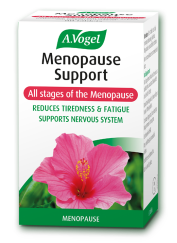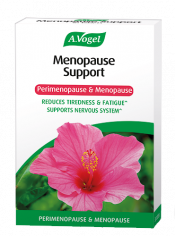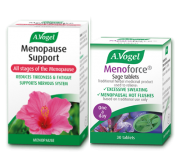Hello, and welcome to my weekly video blog. And today is Week 4 of our joint month, and I'm going to be talking about the worst foods that you can eat for your joints. Unfortunately, it always tends to be ones that we favour, but these foods can very often trigger inflammation and make our joint pain worse.
Keep a food diary
Now, for those of you that have been with us for a long time, you know how fond I am of making diaries. So if you tend to get joint flare-ups regularly, then doing a little diary is an extremely good idea. It's about being honest with what foods you eat on a regular basis and then you make a note of when you get the flare-up or if your joints are particularly bad.
And very often, you will find a culprit that seems to show up every now and again.
Foods which could be causing your joint pain
So today, I'm going to tell you about seven groups of foods that are best avoided if you want to try and help to support your joints.
Dairy
The first one is dairy. Now, I know this sounds a bit strange because we've all been told that dairy is wonderful for calcium, and calcium is great for our bones.
The problem with dairy today is that it can cause inflammation. And a lot of us, by the time we get to menopausal age, cannot digest and break down dairy foods particularly well. So for your source of calcium and for that particular area, then you can look at other foods that will give you as much calcium, if not more, and calcium that's better and more easily absorbed into the body, so will be of greater benefit.
What you can do:
So with dairy, if you don't want to cut it out altogether, then at least try and cut the amount that you are taking on a daily basis. Maybe just try going dairy-free two or three days a week just to see if that makes a little bit of a difference. So you can look at dairy-free alternatives. There's loads of them in your local health food shop and in the local supermarkets.
You can go for the dairy-free milks. Remember, I tend not to recommend soya, but you've got things like almond milk, there's oat milk, and there's even coconut milk now. Some people find that really quite tasty. Look for the dark green leafy vegetables, so look at your calcium-rich foods, and make sure you've got plenty of those in your diet.
So it's things like your dark green leafy vegetables, your nuts, and your seeds. And for those of you that want to, maybe looking in the vegan section of your health food shop, you can find a lot of plant-based protein that you can use in your meals as well that can be very, very helpful.
Gluten
The second food is gluten. Wheat today has been not genetically modified, but modified genetically to withstand so many different areas, pests, and mold, and pestilence, and heaven knows what else.
So the wheat that we eat today is very difficult for our digestive systems to absorb and utilise properly. And that, for some people, can trigger joint pain and joint inflammation.
What you can do:
So, again, there are load and loads of gluten-free alternatives to have instead of bread. Just remember, pasta is wheat. It's wheat as well. And you will get wheat in all sorts of things that you did not realise, even things like some salad creams, and sauces, and pickles, and soups. A lot of those will have wheat in them as well. So, maybe just check what you're buying that little bit more carefully, just to try and avoid it.
Red meats
Red meats can be particularly bad. And this is a strange one because a lot of the beef that's red, reared today, they are fed grains during the winter, and this tends to make, especially the fat, very high in omega-6. So if you're eating a lot of red meat, then it's possible that you're getting too much of the omega-6 oils, and these can be inflammatory.
What you can do:
So if you are one of these people who says, "I'm not going to give up my meat," then look for outside-reared beef and other animals, because they tend to eat plenty of the grass and good pastures, and their sort of meat and fat will be more omega-3, which is going to be far more beneficial for you.
You can look at oily fish, you know, maybe cut down on red meat during the week and have oily fish that little bit more often, because those oils will help to grease the joints and keep you far more supple.
Refined carbohydrates
We find carbohydrates, so that would be things like your white rice, obviously white pasta, white bread, and again, we're going into the gluten.
What you can do:
So look at whole wheats or whole grain products, so look at brown rice. This is a great one, very good for your digestion if you start to get a bit bloating, obviously try and go organic if you can, and look for things like your pulses, your lentils, and your beans, because they can be very good for you, too.
Quinoa as well, or quinoa, however you want to pronounce it, this is practically a whole protein. So as well as being a grain, it's going to give you a lovely portion of protein every time you eat it, too.
Nightshade family vegetables
You can avoid the deadly nightshade family. Now, I bet there's a lot of you out there didn't realise that we eat parts of the deadly nightshade family on a regular basis.
These are foods, they're the tomatoes, potatoes, aubergines, and the bell peppers. For some people, these can be a real inflammatory food.
What you can do:
So maybe, again, a good way is to try and avoid them for a couple of weeks, see if you feel better not having them. And the problem is that, you know, especially the tomatoes, and the peppers, and the aubergines, we see these as healthy foods.
And we don't realise that some foods that are healthy for us as an individual can be the wrong type of food for whatever symptoms that we're experiencing. So these foods, if you can't do without them, then just try and limit them for a little while, again, to see if that makes a difference.
Deadly nightshade vegetables aren’t always bad!Members of the deadly nightshade family may be worth avoiding if you tend to get joint flare-ups or have been diagnosed as having Rheumatoid Arthritis. However, some of these vegetables, such as peppers and aubergines are usually fine if you have creaky joints or osteoarthritis. Keeping a food diary is a great way to tell if vegetables within the deadly nightshade family are causing your joint problems. |
Processed & fried foods
We've got processed and fried foods. These contain or provide really damaging chemicals that can cause problems with the joints, so, obviously, these are best avoided in their entirety.
What you can do:
And I know, we're all really busy, and sometimes it's difficult to cook food from scratch, but when we go through the menopause, fresh foods are just so much better for our general health and all of our symptoms.
Sugar
Number seven, we're looking at sugar, and this can be a real irritant for the joints. So you're looking not only for the joints, but too much sugar will trigger flushes, and palpitations, and headaches, and mood swings, and anxiety. So it really is best avoided as much as possible.
What you can do:
If you need to have some kind of sweetening in your life, you can look at things like stevia which is normally regarded as a good sort of balancing one. Honey in moderation might be helpful, as with things like maple syrup as well. But these should be treats rather than just something to have in your daily diet.
And the important thing here is that sugar comes under lots of different guises in foods and things that you buy. So this is where reading the labels comes in very, very handy. Anything ending in O-S-E, as in ose, is made from sugar. So you've got things like fructose, sucrose, lactose.
All of these contain sugar, and sometimes it's very difficult to realise that. So just spending a little bit of extra time reading the tins and bottles of things that you buy can make a lot of difference. So, as you can see, the number of foods that are best avoided if you can.
Remember to do the diary. And if any of you have tried cutting out these foods and you find that it has made a difference, please let us know. We love to hear the positive stories that come out of all this. So until then, I will see you next week for another edition of A.Vogel Talks Menopause.









